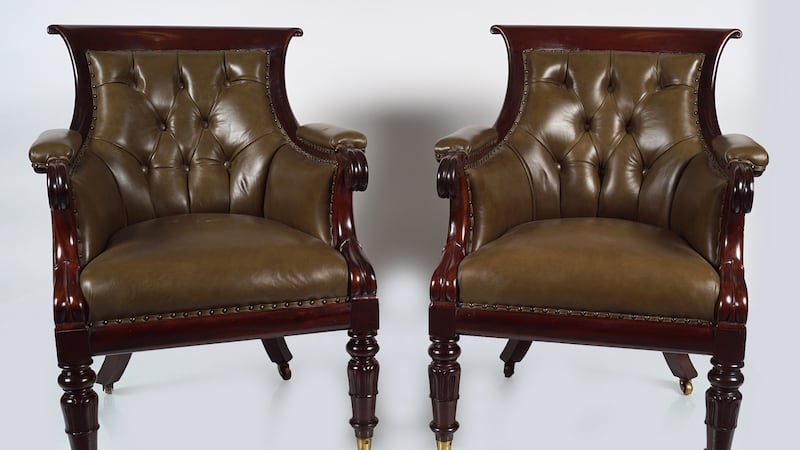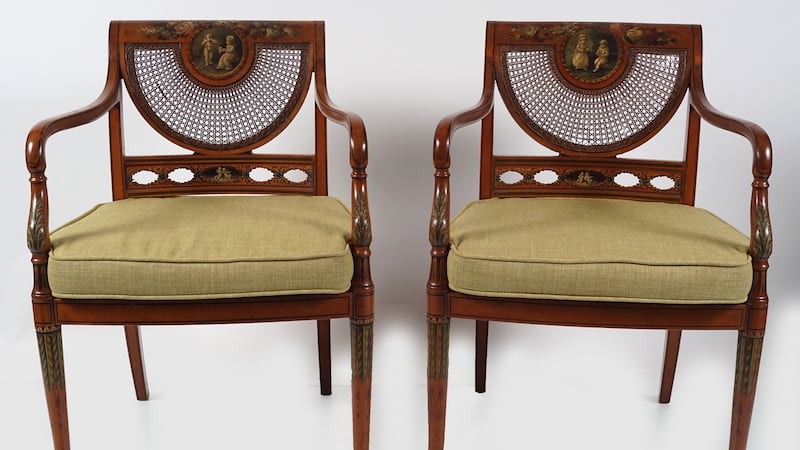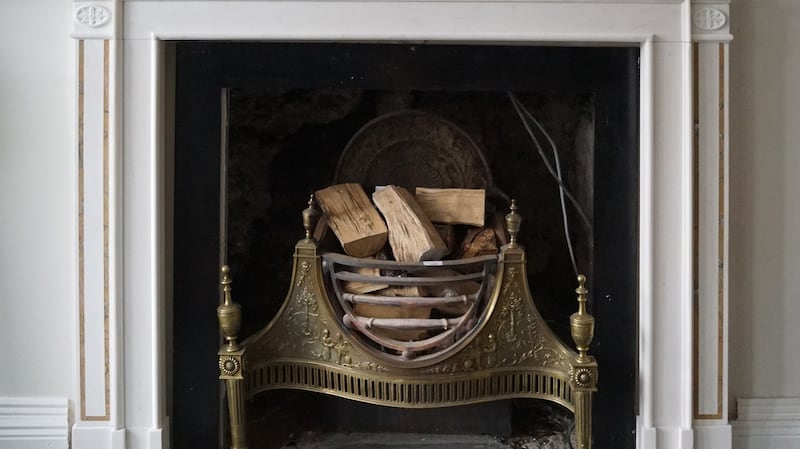At the first public viewing since lockdowns began, the Sheppard brothers are busy at their Durrow saleroom which has been generating much interest with their Legacy of the Big House sale, as it includes the collection of the late Patrick Martin of Coolattin Lodge in Co Wicklow.
The well-known collector and dealer passed away after a long and brave battle with cancer last Christmas at the age of 71 and the sale of the contents of his home will take place from Tuesday, September 28th until Thursday September 30th in Durrow.
Selected lots include a Limerick gold fob watch, by LE Ryan from circa 1876, which is listed at €1,000–€1,500, along with a pair of 19th century parcel-gilt Sevres-style vases, in the form of conch shells surmounted by a cherub (€300– €500).
The sale has a good selection of occasional chairs including a lovely Sheraton satinwood pair listed at €1,500–€2,500; a pair of 19th century ornate walnut armorial seats €400–€600, and a pair of 19th century Louis XVI gilt armchairs. The sale even has The Little Red Chairs, the book by Edna O’Brien which is a signed, limited edition at €200–€300.
For those in search of a fire surround, lot 301 is a neo-classical Sienna and white marble chimney piece with an inverted breakfront mantle above a Greek key scroll frieze (€4,000–€6,000) and the large, early 19th century baronial grate (lot 274, €800–€1,200) would make a fine insert.



Country sales always have interesting nuggets that you just don’t come across every day and in the Sheppard’s auction it is lot 403, which is described as a Benin bronze currency bangle.
While the international repatriation of the Benin Bronzes – a set of more than 1,000 artefacts looted from the royal palace in the old Kingdom of Benin, now in Benin City, Nigeria – has begun and not before time, this piece is a manilla.
These were bangles made from bronze or copper that were used as a form of currency until the 1940s. From the Spanish for word for bracelet, the horseshoe-shaped pieces date as far back as the early 16th century and were essentially the currency used within the slave trade, when a human could be bought for eight of these bangles. They were also worn by women, as a mark of their husband’s wealth.
By 1902, the Native Currency Proclamation in Nigeria banned the import of these currency bangles in order to encourage the use of coin, and by 1948, they were seen to be such an entrenched currency that the British undertook an operation entitled Operation Manilla to ban their use entirely.
A manilla on display at the Pitt Rivers Museum in Oxford, which displays archaeological and anthropological collections from around the world, was discovered in a ship wreck off the coast of Co Cork in 1836.
The bangle in Sheppard’s sale, a highly ornate piece in comparison to many, is listed at €150–€250.






















